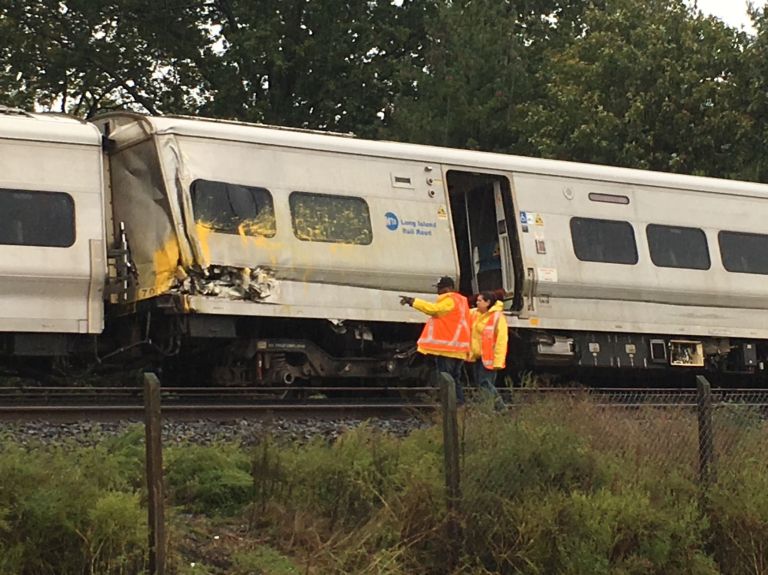
The work train that caused a Long Island Rail Road passenger train to derail near New Hyde Park last month had derailed itself before the accident, the railroad’s president said last week.
The work train was knocked off course Oct. 8 when it hit a point where a switch was unexpectedly flipped as it traveled east, forcing it into the path of the oncoming eastbound passenger train, Patrick Nowakowski, the LIRR president, said at an Oct. 26 meeting of the Metropolitan Transportation Authority’s LIRR committee.
The Federal Railroad Administration is leading the continuing investigation into why the switch was improperly flipped, leading to a collision that injured 33 people and snarled train service for two days, Nowakowski said.
“This is not one of those derailments where you spend a lot of time trying to figure out what happened, but we do need to figure out why it happened and what we need to do so it doesn’t happen again,” he said.
The work train had been resurfacing the westbound track along parts of the LIRR’s Main Line that Saturday and was preparing for a crossover to the eastbound track scheduled for midnight, about three hours after the collision, Nowakowski said.
It was going east toward Mineola when it reached a crossover point in Garden City, about half a mile east of the New Hyde Park station, where trains can move from one track to the other using switches, he said.
In that area, a switch had been flipped to send the train onto the eastbound track, but the “movable point frog,” a device that moves parts of the track to facilitate a crossover, had not been flipped, Nowakowski said.
The work train operator tried to stop the train as it “unexpectedly diverted,” but “the frog was not in the appropriate position and the work car derailed,” Nowakowski said.
The operator got out of the train and ran toward the New Hyde Park station to try and stop train traffic, but by that time the 12-car Huntington branch train carrying about 600 passengers was already traveling east at 43 miles per hour, Nowakowski said.
When the collision happened, the work train’s back end “sideswiped” the passenger train’s second car, knocking it off the tracks, and hit the third car, slightly derailing it, Nowakowski said.
The FRA is investigating who was responsible for flipping the switch without flipping the frog, Nowakowski said. The switches could only be operated manually at the time because of the track work, so it could not have been flipped remotely, he said.
“Certainly that is a focus of the investigation as to why they were in the position they were in,” Nowakowski said.
An MTA board member, Charles Moerdler, said the work train had been involved in a prior derailment, but that incident “had nothing to do” with this one, Nowakowski said.
Nowakowski’s explanation echoed U.S. Sen. Charles Schumer’s statement to Newsday the day after the crash that it was likely caused by “someone who left the switch in the wrong position.”
The Oct. 8 collision along one of the busiest stretches of the LIRR’s Main Line injured 26 passengers and seven LIRR employees. It suspended train service on the Oyster Bay, Ronkonkoma and Port Jefferson branches until the morning of Oct. 10.
Reach reporter Noah Manskar by e-mail at nmanskar@archive.theisland360.com or by phone at 516.307.1045 x204. Also follow us on Twitter @noahmanskar and Facebook at facebook.com/theislandnow.






